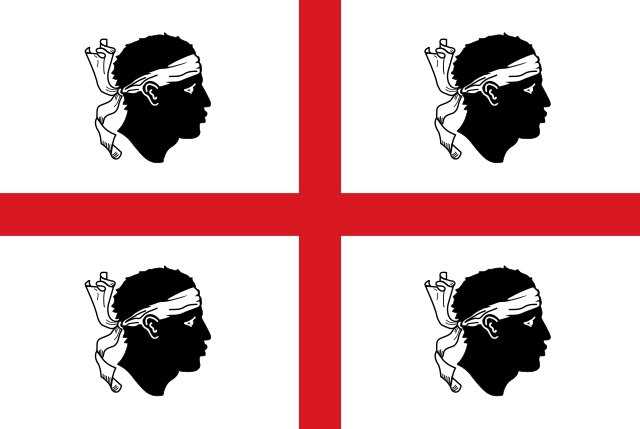


In May, the nature of Sardinia is tinged with incredible colours: the yellow of the brooms, the bright green of the Mediterranean scrub, the intense pink of the thistle flowers and the thousand shades from red to purple of the wild flowers. Even the sea seems to awaken from winter hibernation, with intense and bewitching emerald and crystalline reflections.
The weather in the week of Pentecost is mild and often warm enough for an unexpected dip in the water. Furthermore, the air temperature is ideal for walking, outdoor sports and visiting seaside and inland villages.
Tourist structures are generally open and bars and restaurants prepare very tasty typical dishes in a period of the year that is not too crowded with tourists.
Furthermore, during the period of Pentecost it is beautiful and engaging to attend the sacred and profane events scattered in all the municipalities of the island, to get to know new, interesting places and local customs.
The Festha Manna (big party) is a very heartfelt festivity in Sardinia, precisely in Porto Torres, and takes place during the Pentecost period. The festival is dedicated to the memory and worship of the three Turritan saints Gavino, Proto and Genuario, martyrs of the Roman period, today patrons of Porto Torres in Gallura.
The religious celebration in their honor is very articulated and takes place between Sassari and Porto Torres with day and night processions that carry the 3 wooden statues of the 1600s, depicting the 3 martyrs, from one place of worship to another.
The festival is very lively and every year presents a calendar full of initiatives that take place throughout the week.
All the neighboring countries participate in the various processions, as well as the many tourists who love to travel in the spring.
In Sardinia it is one of the best-known events that take place during the Pentecost period.
Passing from the sacred to the profane, one of the food and wine events most followed by locals and tourists is Cantine Aperte, the perfect opportunity to taste Sardinian wines directly in the production locations.
An event that sees the meeting between wine enthusiasts, simple curious and producers. It is a wonderful experience to get to know the productive fabric of Sardinia and its territory, to discover companies that have been working for generations with passion and great competence, to taste excellent wines, typical of this marvelous Italian region.
We recall that Sardinia has a great variety of soils from the fertile plains near the sea to the rocky hills of Jerzu and Tertenia up to the sandy ones of Oliena and Dorgali. Among the best-known wines: Cannonau, a red with a high alcohol content, Nuragus, dry and slightly acidic, Carignano, ìa Malvasia, a sweet wine ideal for desserts, Vermentino, Vernaccia, myrtle and Moscato.
Spring is the mating season, they chase each other and perform the dance of love: the males try to conquer the females with an elegant and musical choreography.
At the end of May and the beginning of June it is possible to spot flocks of these splendid birds engaged in their skirmishes in Olbia, in the Poltu Quadu area, and in San Teodoro, a true spectacle of nature.
Read the article on pink flamingos
Eating in Sardinia is synonymous with family and tradition, it is the main opportunity to be together with loved ones, to spend significant moments and carefree occasions.
In Sardinia, families traditionally gather at the grandparents' house during Pentecost, celebrating at the table for hours, with appetizers, first courses, second courses, side dishes, vegetables, desserts and coffee paired with the many island wines.
To digest, there is no shortage of local proposals: myrtle or fil'e ferru!
The tradition of typical Sardinian cuisine, just like the family one, boasts very ancient roots.
The oldest traditional dishes are from the land, given that Sardinia has always been dedicated to sheep farming, however they have expanded over time with dishes based on fish and shellfish typical of the fishermen.
Sardinia in past centuries was inhabited mainly in the hinterland, while the coasts, unhealthy and unsafe, were almost deserted.
This is why Sardinian cuisine has such a wide selection of savory and aged cured meats and cheeses and the famous Carasau bread, a very thin bread made up of light and crunchy sheets.
One of the typical Sardinian dishes, one of the "poor" ones that uses carasau bread is the "Pani Frattau", in which some sheets of carasau bread are placed one on top of the other and interspersed with tomato sauce, to then be cooked in a pan with an egg on top.
Roast suckling pig is another classic of Sardinian cuisine loved all over the island, while other traditional dishes are specific to each area of Sardinia: the Gallura soup typical of Sassari and Olbia; the fregola, small balls of dough, topped with clams and seafood in the lower Campidano area; the Lorighittas nell'Oristanese, a special pasta made up of two rolled strands of dough and usually served with sausage sauce; panadas, meat, fish or vegetable pies.
At the end of the meal you can choose from many desserts such as seadas, fried pasta filled with fresh cheese served with local honey, acciuleddi, sweets in the shape of braids, papassini with raisins, cocciuleddi, pastries flavored with tangerine peel, dried fruit and cinnamon.
